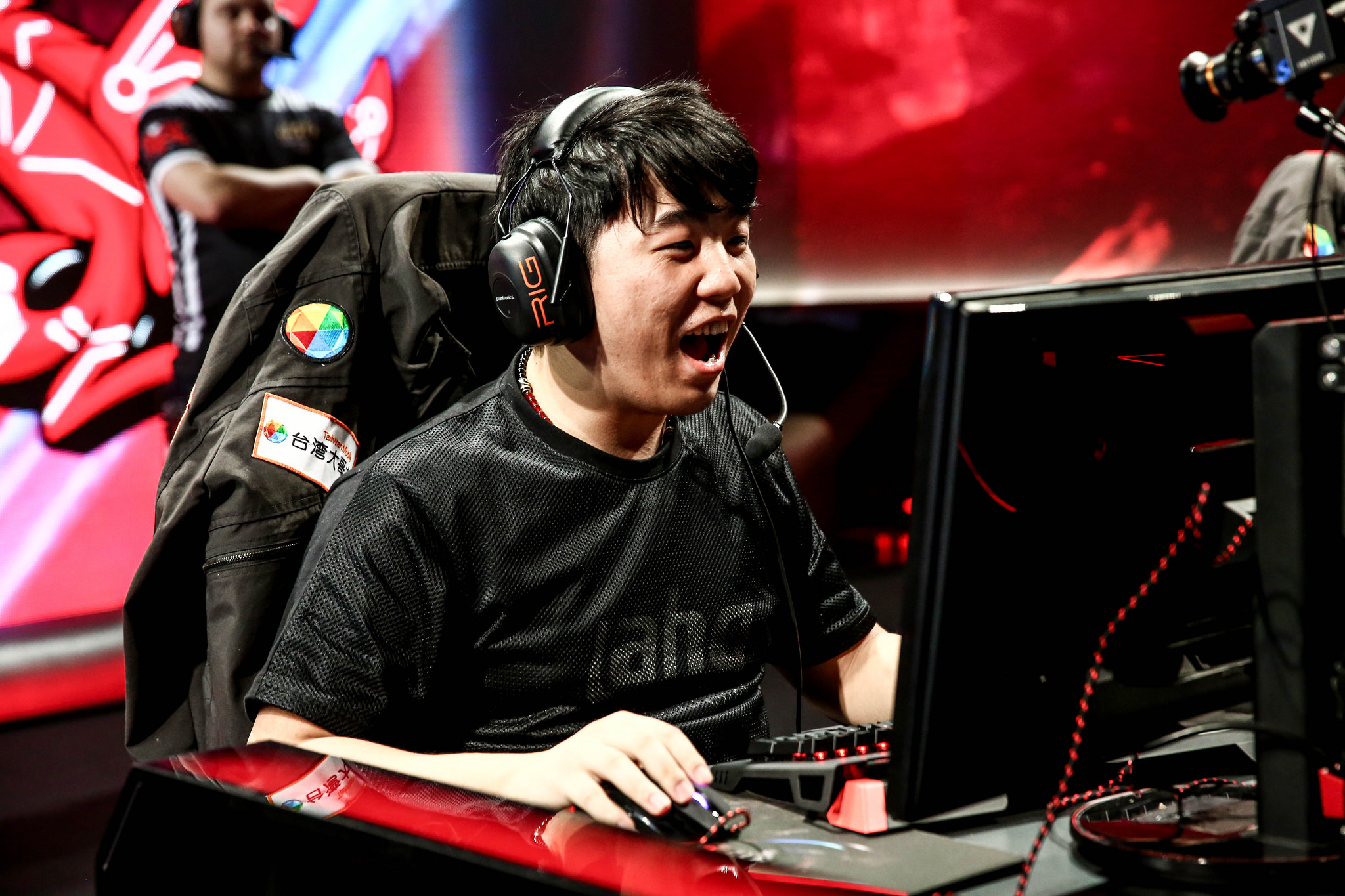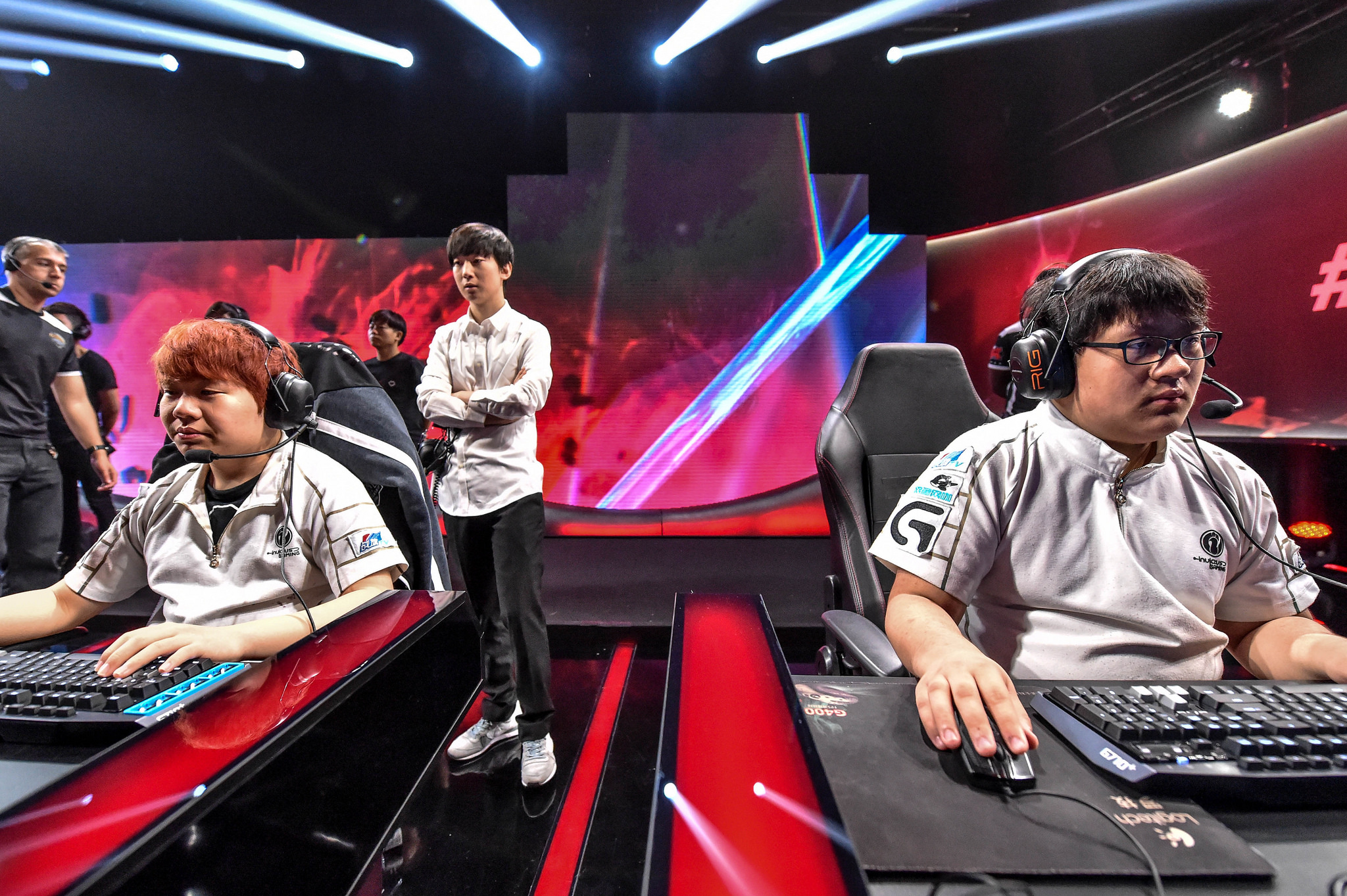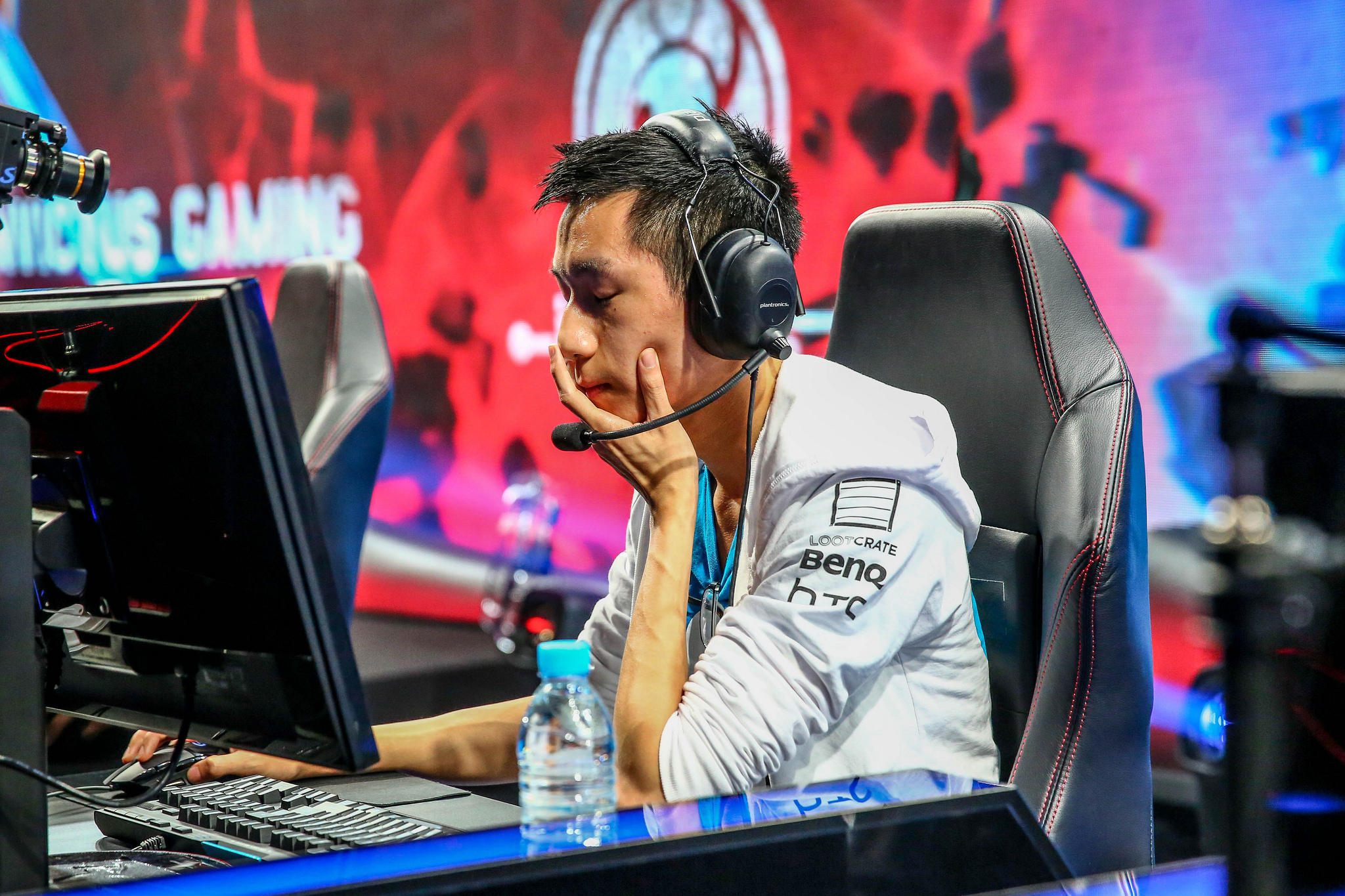Taiwan’s LoL Worlds triumph comes at North America’s cost

Well, that wasn't quite as planned. North America's exuberant week one results fanned flames of hope this year—both Counter Logic Gaming and Cloud 9 had demonstrated themselves to be major contenders, boasting solid records after that initial clash of regional styles. Cloud 9, in particular, had swept their group: a strong 3-0 starting record that required a single more win to advance. One more win against teams they'd already caught by surprise, who had already played every card they had in their games against each other. North American fans had every reason to believe that, this year, the odds were finally in their favor.
Contrast that to the lackluster week one start for the Asian regions. Though Korea was marching along as always, China and Taiwan were suffering in the standings. The same ahq that had impressed during the Mid-Season Invitational was only doing as well as their second-seed counterparts in the Flash Wolves, and only Edward Gaming was showing up for China. LGD, formerly a favorite for the world title, found themselves at a devastating last place in Group D at the end of the first round of games.
When the second week ended, China was left begging for the number of the truck that ran them over. Both Invictus Gaming and LGD only managed to secure wins after getting knocked out of playoff contentions entirely, leaving only EDG to hold China's torch in the coming weeks. An extremely disappointing result—especially when compared to their neighbors just across the Taiwan Strait.
Money doesn't talk
What happened to China? For most of the year, everything seemed to be on track for eventual world dominance. Edward Gaming's much-lauded victory over SKT T1 back in Tallahassee suggested, at the very least, that their top teams have at last achieved parity with South Korea. The pick-ban phase, in particular, was brilliantly done—a perfect neutralization of SKT T1's most powerful weapon in midlaner Faker, and killing what was previously a pristine and unblemished victory record on midlane illusionist LeBlanc.
Months later, the events of the Mid-Season Invitational seem like a dream. Edward Gaming's still in contention, claiming the second seed in Group C—but their rematches against SKT T1 was less than convincing. They hadn't managed to bottle the same magic that saw them to victory over the summer. And whatever it was that allowed LGD to claim the LPL title over Edward Gaming never made it onto the transcontinental flight to Paris.
Part of it can possibly be blamed on the game's live balance team. Tallahassee was pre-Juggernaut, placing less emphasis on the importance of the top lane role outside of good Teleport usages. It was also pre-Cinderhulk nerf, meaning that the top junglers and top laners at the time were meatslabs like Sejuani and Maokai: champions that are meant to wade into a fight and be hard to get around. Changes since then have increasingly rewarded mechanically complex assassin-style junglers instead, and damage-oriented top laners. These champions require a higher degree of teamwork and risk-taking to accomplish as much as their meatier (and nerfed) counterparts.

This is a welcome change for teams like SKT T1, where jungler/laner synergies were always an important aspect of their gameplan. It wreaks absolute havoc upon the Chinese teams for similar reasons. The teamwork-focused game changes exposed a fundamental weakness: LPL's top teams were getting by with letting their imported carries play solo queue while the remaining players on the team played glorified support roles. In order to thrive in the Worlds metagame, however, you need better teamwork than that. Shotcalling and vision control while under pressure requires spoken coordination and nuanced planning that works best if everybody speaks the same language. The linguistic shortcuts used by Chinese teams in place of mutual fluency wasn't enough to overcome the inherent advantages held by all-native teams at the same level of play.
The biggest gaming news, reviews and hardware deals
Keep up to date with the most important stories and the best deals, as picked by the PC Gamer team.
Teams such as AHQ and Flash Wolves, for example. For the first time since 2012, more Taiwanese teams are in the World Championship playoffs than their Chinese peers. The power has shifted across the Strait, and the reasons for it are somewhat perplexing without in-depth knowledge of the relationship between both circuits. The fact is: the LMS is the poor man's circuit of Asia. The teams don’t have the funding, the sponsorship supports, or the streaming numbers of their easterly and northerly counterparts, even as years of dominance against Southeast Asia at least proved the presence of talent.
How, then, did they manage it? Well, to be frank, because China spent a medium-sized fortune on players, coaches, and analysts. Taiwan basically cribbed their notes. As their teams weren't competitors against each other, and Taiwan wasn’t sufficiently skilled to provide a challenge even against their top teams, it was sometimes safer to scrim LMS teams with LPL teams and vice versa than it was against teams within their own circuit. Less chance of strategic leakages or revealing your hand too soon against an opponent you had to beat a couple weeks down the road—a benefit that was also utilized by Korean teams. The relatively minimal distance between the three regions also made it acceptably possible: though the Taiwan-Korea latency was far from ideal, it was still close enough to offline conditions to practice general strategy and tactics.
This meant that Taiwan got exposed to China's work-in-progress strategies. What champions they were utilizing, what their pick-ban procedures looked like, and what they thought of upcoming and current patches. The key material that they didn't have the resources to privately construct themselves were provided gratis by training partners that needed their help practicing it for upcoming matches. And unlike China, the LMS was too poor to hire more than one or two high-level talents in the first place.
Nobody in the LMS was going to spend six-figure sums on any individual player, much less a team of them plus substitutes. The Koreans that did find their way to Taiwan were by and large solo queue talents, scouted to make up for mechanical deficiencies. And it was no coincidence that even they were discarded in the end. By the end of week two, both LMS teams were made up of Mandarin-speaking Taiwanese players.
The great Chinese hybridization experiment has failed. The coming months will determine how much of an impact that will have on the continent's pro gaming scene—and what lessons they've opted to learn or ignore.

Bye bye American pie
As for what lessons North America needs to learn: where to start? It's tempting to dismiss week one as a fluke. The total disintegration of North America's hopes and dreams this week would suggest as much. But that's lazy and intellectually dishonest—Cloud 9 going 3-0 against 3 different regional styles cannot be so easily dismissed, even as North America's detractors boo them and call for the region to be reduced to two Worlds seeds or even made a wild card region (an impossibility from Riot's marketing standpoint, to be frank). But North America's peculiar week one strength was also, fundamentally, their weakness.
The NA and EU LCS are the only regions to play best-of-one group stage sets back home, encouraging unorthodox and surprising play styles. North America chose to polish that into an intimidating weapon—unorthodox stylistic counters like Veigar bewildered opponents and made it easier for Cloud 9 and CLG to play at their own pace. An off-balance opponent was unlikely to catch them mid-rotation or pre-engagement, and by the time they figured out the strategy's positional and timing requirements, it was usually too late to take the game back.
But as powerful as that weapon was, it was also extremely fragile. With a week to go over VODs, the North American puzzle was largely solved—and not vice versa. The other regions, used to having to figure out strategies to complete a best-of-two set, had the luxury of an entire week to figure out where they went wrong and how best to prevent it, knowing that the same game environment will persist through that time, unaffected by balance changes. The NA teams were undoubtedly doing the same, but when it came time to pick and ban champions they largely stuck to the script.
Among the most common complaints between pro players and coaches is, in fact, problems sticking to the script. Players have complained since the start of the LoL pro scene that they'd enter a draft with a plan, then change their minds at the last moment and pick something they were personally more comfortable with, but less useful overall to the team's strategy. But the opposite is also an issue, when you come in planning to play one way, and are unable to adapt when things go south. This isn't so much of a problem if you've forced the opponent to react to you instead of the other way around, but it isn't so applicable to an enemy you have to defeat twice in a row.
The fact that they ward so little in comparison to their Eastern rivals is further proof of this. Vision isn't as useful if you're committed to a singular course of action regardless of how the enemy team reacts—but it is absolutely vital if you want to study their motions and learn when to take action.
North American teams don't really have a skill gap, or a logistics gap, or a funding gap (the idea that they lost to the LMS teams due to support issues is laughable in light of how little the LMS teams get to work with). They don't even really have a preparation gap, at least coming into the game. But there is definitely a facet to their strategic thinking that isn't getting fleshed out enough, and maybe the format of the NA LCS has a lot to blame for it. When your competitive experience is largely dictated by who can seize the initiative first, and not based on how well you can play tai chi with the overall flow of the opponent's strategy, you're going to end up shadowboxing against teams that have trained otherwise.
That isn't the only flaw, of course. North America is a standalone server—isolated not just by its singular nature, but by two massive oceans on either side. Its professional scene rarely gets to cross-pollinate with its transatlantic brethren, and only occasionally with Japanese players struggling to get by at 150+ ms latency. In contrast, though EU East and Turkey are hardly at the same level as the EU LCS, their internal metagame will inevitably depart from what is considered orthodox, expanding Europe's exposure to the strategic breadth of the game. And in Asia, well—the three kingdoms of LPL, LCK and LMS speak for themselves.
North America's isolation needn't persist, though. There's a scrappy young upstart just south of them that managed to scare the pants off Group A's first seed. Brazil's PaiN Gaming took a game off the Flash Wolves, and ended their Worlds run with two wins—the most that any Wildcard region has ever managed to accomplish. And they certainly didn't do it by playing to everybody else's standards and expectations.
A developmental partnership between the NA LCS and CBLoL would be extremely profitable for Brazil, naturally. Even their best teams only stack up to middle of the pack for the NA LCS—due largely to lack of experience and comparative competitive pressure to pare away bad habits. But the relationship might be even more vital for North America—a safe partner to scrim all-out against, and a shattering of the echo chamber they're currently trapped in. These are the same factors that allowed the Taiwanese LMS to climb, to the surprise of everybody, over the combined forces of bald eagles and apple pie.

PC Gamer Pro is dedicated to esports and competitive gaming. Check back every day for exciting, fun and informative articles about League of Legends, Dota 2, Hearthstone, CS:GO and more. GL HF!

